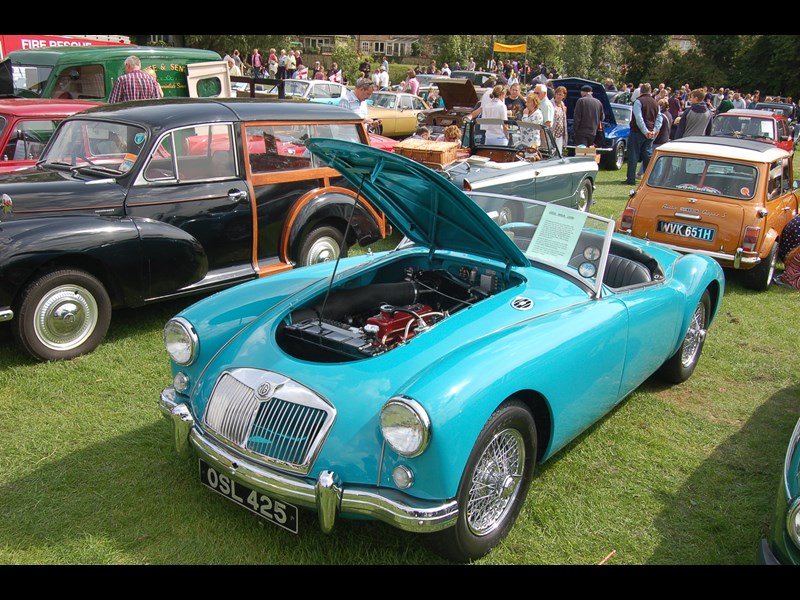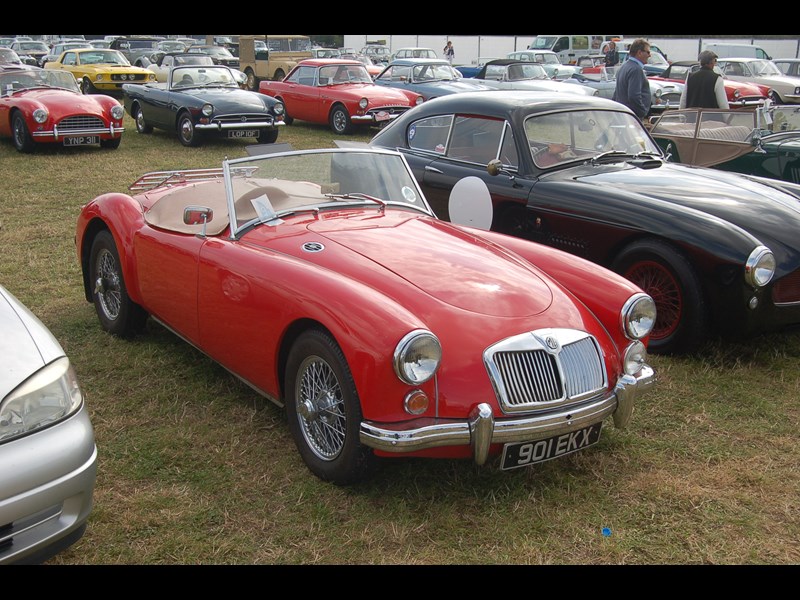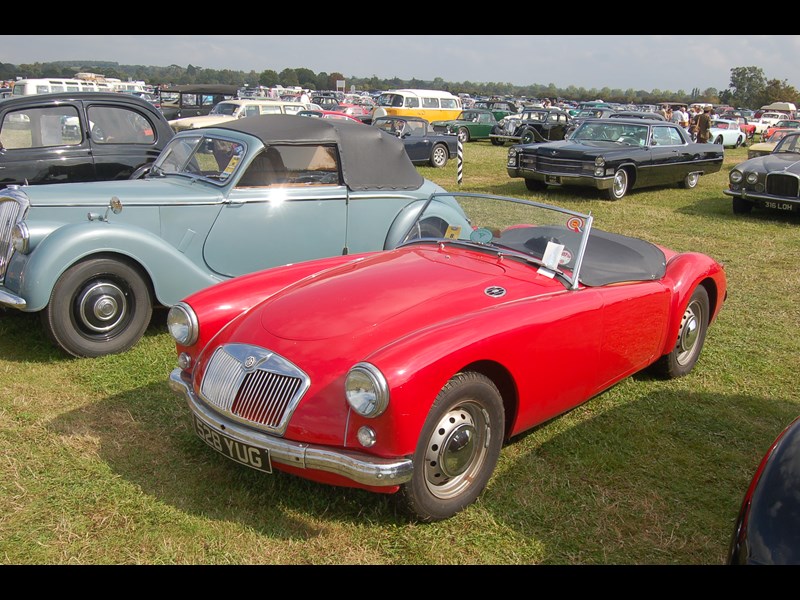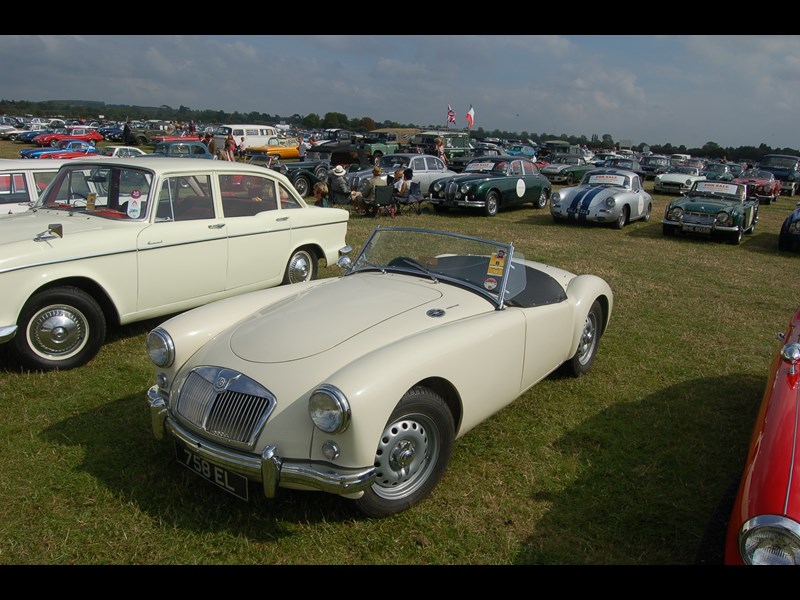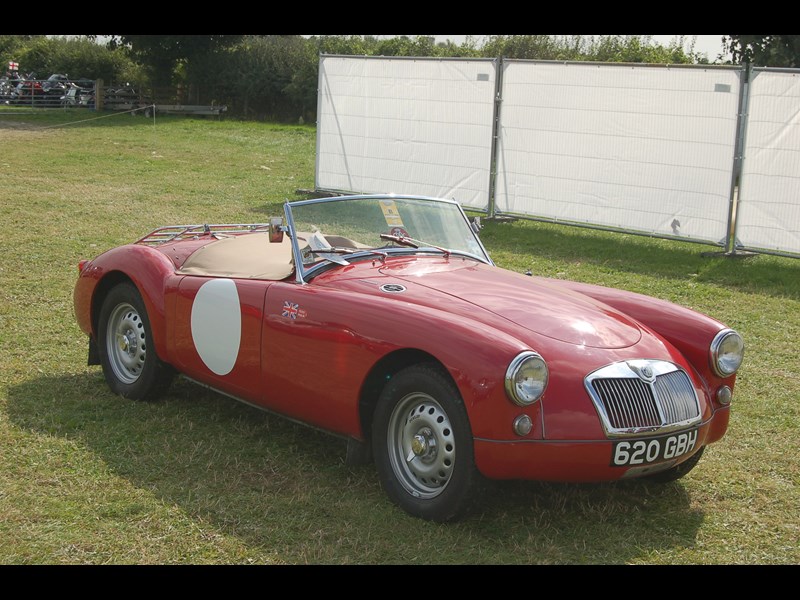If you’re not bowled over by the looks – and you almost certainly will be – then the driving experience should be enough to convince you of the MGA’s pedigree. Even in lower-powered 1500 form, the MGA is a perky performer, although the more powerful engines do add a welcome turn of speed. But that’s not really what this car is all about. What it does exceedingly well for a car of this vintage is ride and handle with real aplomb, which makes it a classic that you really can use every day, even for the longest of journeys. A combination of independent front suspension and rack and pinion steering provide accurate control, and even with a live rear axle ride comfort is more than acceptable. There isn’t much body roll either which makes tackling a twisty B-road an enjoyable experience, while the drum brakes are more than powerful enough to inspire confidence. The functional cabin is a touch on the snug side for taller drivers but it’s easy enough to get comfortable, and all the controls are well-placed.
VITAL STATISTICS
Engine: 1588cc/4-cyl/OHV
Power: 80bhp@5500rpm
Torque: 87lb ft@3800rpm
Maximum speed: 101mph
0-60mph: 14.2sec
Fuel consumption: 24-26mpg
Transmission: RWD, 5-spd man+O/D
WHAT TO LOOK FOR
1 When you consider a professional restoration can exceed £30,000, the need to be sure of the car’s condition becomes clear. Unless you’re absolutely certain about the quality of previous restoration, finding another car – even one in need of work – may be the better option. Panel fit is a good guide to overall condition so check the shutlines around the doors and bonnet/wings – major variance here should ring alarm bells. Rot is a serious issue too, the inner and outer sills, A-pillars, wings, and door bottoms the main indicators of problems beneath. The boot lid, bonnet (both of which contain a plywood panel that can harbour rot), and door skins are aluminium panels over steel frames, so galvanic corrosion needs to be checked for as well.
2 The separate chassis will need careful checking. Rot-spots include the front and rear cross-members, the battery boxes, the chassis rails along the sills and around the pillars, and the rear spring hangers. While underneath, take a good look at the wooden floors which are susceptible to rotting-out, paying particular attention to the points where they attach to the chassis. Crash damage may have distorted the chassis and the car will never be right if it’s been ignored – again those panel shutlines are the best indicator of hidden problems. Getting the car on a jig is the only way to be sure.
3 A variety of engines were fitted over the years, initially a 1500cc B-Series unit and from 1959 a more powerful 1600cc lump. Neither hold particular worries for buyers, although there are a few areas to check. Oil leaks are common, often caused by the oil-thrower at the rear of the crankshaft and a seal conversion is available to cure the problem. However, anything more than a few small drips will require a proper re-build. Worn piston rings or bores will cause excessive blue smoke from the exhaust, and it’s worth checking for any signs of head gasket failure as water leaks and cracked cylinder heads are common issues. Steady water temperature and around 50psi of oil pressure when warm are good signs on a test drive. Engine mods (or indeed complete engine swaps) such as bigger carburettors and cylinder head conversions are popular with owners.
4 More troublesome is the Twin Cam engine, in production for just a couple of years. Not only did it have a reputation for drinking oil – poor piston-ring design was to blame – but changes in fuel mixture strength led to many a melted piston. Most will have been sorted by now, but they are tricky and expensive to re-build correctly, so we’d advise a specialist inspection if you fancy one of these.
5 The four-speed manual gearbox can prove troublesome. In particular, disintegrating second gear synchromesh and worn layshaft bearings are the main issues (a chattering noise in first or reverse gears signifies the latter.) Many will have been rebuilt or replaced, so check the history for previous work. Some cars have been converted to a five-speed set-up using a Ford Sierra gearbox – purists may frown but it’s not a problem as long as the job was done properly. Listen-out for a whining differential and check that worn bearings haven’t allowed oil to leak from the axle casing onto the brakes.
6 The drum brakes on early models are effective with proper maintenance, but a conversion to the later front disc arrangement is a popular – if largely unnecessary – mod. The kingpins/trunnions need regular greasing to prevent wear and seizure, so beware of stiff steering, while leaking lever arm dampers and tired rear leaf springs are other issues to watch for. Original buyers had a choice of steel disc or wire wheels (twin cam models used Dunlop centre-lock items), and these are often swapped depending on preference. Wires look good but ensure spokes and splines are in good condition as professional re-builds aren’t cheap.
7 The good news is that just about all interior trim parts are available, so a tatty cabin isn’t a deal breaker, but costs will soon mount if a complete re-trim is required. Poor restoration may be more trouble than it’s worth, so an original car in need
of work may be a better bet. Plenty of cars end
up with parts from other MG models in a bid to keep restoration costs down, which will adversely affect values.
OUR VERDICT
While the MGA might appear simple in design there are enough pitfalls to make a rash purchase unwise. That shouldn’t put you off this fine British classic – it just means that you need to take a little care and preferably engage the services of a reputable specialist to ensure you don’t land yourself with someone else’s bodged restoration. Get it wrong and a world of financial pain awaits. Be patient and you’ll have one of the finest classic sports cars out there.
